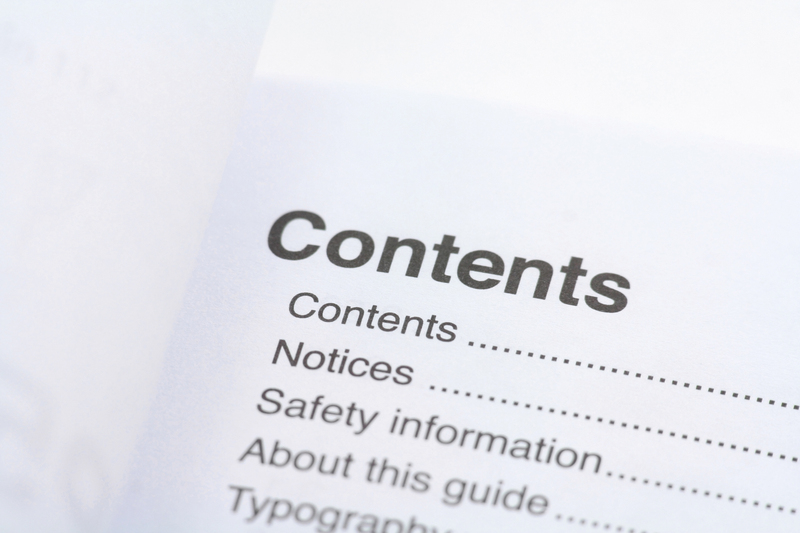The Complex Art of Piano Moving: Leave it to the Experts
Posted on 11/06/2025
The Complex Art of Piano Moving: Leave it to the Experts
Introduction: Why Piano Moving is More Than Just Heavy Lifting
When you think of moving, you might imagine packing boxes, loading furniture, and making countless trips up and down stairs. However, piano moving is an entirely different beast. Pianos are not only hefty--often weighing between 300 to over 1,000 pounds--but they are also intricate, finely-tuned instruments with hundreds of delicate parts. Each move requires skills that go far beyond ordinary lifting and carrying.
Whether you own a classic upright or a majestic grand piano, entrusting your precious instrument to anyone less than a professional piano mover risks both the instrument and your property. This comprehensive article will shed light on the complex art of piano moving, outline the essential steps, and explain why it's crucial to leave it to the experts.

Understanding the Anatomy of a Piano
Before diving into the actual process of moving, it's crucial to understand what makes pianos so challenging to relocate. Each piano contains:
- A soundboard made of wood, which is highly sensitive to humidity and temperature changes.
- Strings and hammers, finely calibrated for perfect sound, which can be thrown out of tune or damaged by jostling.
- Outer casing and legs that must be protected from scratches, dents, or accidental breaks.
- Various moving parts like pedals and keys, all of which can become misaligned if handled improperly.
The construction makes pianos not just heavy, but awkward to maneuver. This means successful moving requires technical knowledge and specialized equipment that most people simply don't have at home.
Risks of DIY Piano Moving
The Dangers Involved
Attempting DIY piano moving is far riskier than it sounds. Here are just a few dangers you might encounter:
- Personal injury: Lifting something as massive and unbalanced as a piano can cause severe back injuries or worse.
- Property damage: Stairs, walls, and floors can all be scratched, dented, or gouged.
- Instrument damage: Even a slight miscalculation may result in internal issues, broken legs, or irreparable tuning problems.
While moving a couch or a fridge is within most homeowners' abilities, a piano's combination of weight, fragility, and value makes professional movers an absolute must.
The Art and Science of Professional Piano Moving
Piano movers are more than just strong; they are technicians, strategists, and craftsmen. The professional piano moving process blends practical skills with engineering know-how and a respect for the musical craft. Here are the core steps the experts undertake:
1. Comprehensive Assessment and Planning
- Initial inspection: Movers assess the piano's model and current condition. They'll consider its dimensions, weight, and any special features.
- Logistical planning: Professionals map out the exit route, checking doorways, hallways, stairs, and turns, identifying obstacles or slope issues.
- Custom solution: Depending on the results, the movers may assign extra crew or order specialty equipment for complicated moving environments.
2. Prepping the Piano
- Disassembly (if needed): On a grand piano, movers may remove the legs, pedal, and music rack for easier maneuvering. Upright pianos often stay intact.
- Packing: Every exposed area is carefully wrapped in thick blankets, padding and shrink wrap to prevent scratches or moisture penetration.
- Securing moving parts: Keys and lids are locked or taped down, and sometimes parts are gently removed and packed separately.
3. Lifting, Loading, and Transportation
- Specialized dollies and straps: Unlike regular furniture, pianos require heavy-duty dollies, secure harnesses, and, on occasion, cranes or hoists for upper floors.
- Team coordination: Piano moving is rarely a solo job. Experienced teams coordinate each step, communicating to avoid abrupt movements or imbalance.
- Safe loading: Once on the truck, the piano is anchored with straps, placing it towards the front for weight distribution and minimizing movement during transit.
4. Transportation and Environmental Considerations
- Climate control: Professional movers often use climate-controlled vehicles to shield the instrument from temperature or humidity extremes.
- Secure transit: Route selection and gentle driving ensure that bumps and vibrations don't disturb the piano's tuning or structure.
5. Delivery and Reassembly
- Unloading and placement: The same level of care is used when bringing the piano into its new home. Protective materials are left on until final placement.
- Reassembly and inspection: For grands, the movers reattach the legs, pedals, and other removed components, checking for balance and correct function.
- Post-move care: Many reputable movers recommend tuning the piano after it has settled in its new spot, due to potential minor shifts during transit.
Special Challenges in Piano Moving
Some piano moves present extra obstacles. Here's how expert piano movers handle these unique scenarios:
- Stairs: Ascending or descending flights of stairs requires ramps, creative rigging, and a firm understanding of weight distribution to prevent disaster.
- Tight spaces and sharp turns: Certain piano shapes (like baby grands) struggle with narrow spaces; pros often partially disassemble and expertly rotate as needed.
- Elevators: Movements in apartment buildings or concert halls may need careful elevator coordination or even hand-winching using cranes for higher floors.
- International moves: When shipping across long distances or overseas, pianos require custom crating to withstand jostling and environmental stresses.
Why Leave Piano Moving to the Experts?
Key Benefits of Hiring Professional Piano Movers
- Specialized equipment: From piano skids and ramps to air-ride trucks, experts invest in the right tools for each challenging move.
- Skilled labor and experience: Movers undergo intensive training, often apprenticing for years before handling a move solo. This means fewer mistakes and no costly accidents.
- Liability coverage: Legitimate piano moving companies are licensed and insured, protecting your property and your beloved instrument in the unlikely event of damage.
- Time and stress savings: What might take you all day (or longer, with the risk of disaster) is often completed by pros in a smooth hour or two.
- Post-move support: Many reputable movers offer re-tuning recommendations or even set you up with a local piano technician for your new home.
How to Choose the Right Piano Moving Service
Selecting the perfect piano moving company requires more consideration than choosing a standard mover. Use these guidelines:
- Verify experience: Ask how many pianos the team has moved, and whether they have handled your piano type (upright, grand, digital, etc.).
- Check for insurance: Only hire movers who carry full liability and workers' compensation insurance.
- Request references: Reputable piano movers happily provide customer testimonials and references.
- Review equipment: Confirm the company uses purpose-built equipment for piano moving, not standard moving tools.
- Get a written estimate: A reliable service will inspect the move, clarify obstacles, and deliver a firm, itemized quote--no surprise charges.
Common Types of Pianos Moved by Professionals
Expert piano movers are equipped to transport all types of pianos, including:
- Spinet pianos and Console pianos: Smaller and lighter, but still require care with stairs and turns.
- Upright pianos: Most common in homes, weighing up to 800 pounds and especially top-heavy.
- Baby grand and grand pianos: Often the most delicate and valuable; these require partial disassembly and custom wrapping.
- Concert grand pianos: For venues, these demand entire teams and special coordination due to their size and value.
- Digital pianos and organ consoles: While lighter, internal electronics must be protected from knocks and static shock.
How Much Does Professional Piano Moving Cost?
The average price for moving a piano varies based on several factors:
- Type and model of piano (upright, grand, baby grand, etc.)
- Distance between the move's origin and destination
- Number of stairs, steps, or sharp corners involved
- Need for special services (disassembly, cranes, storage)
Generally, local upright moves start at around $200-$400, and grand piano relocations at $400-$1,000 or more. Long-distance and international moves are priced individually but can exceed $2,000 depending on complexity.
Despite the cost, hiring a professional piano mover almost always prevents the far greater cost of repairs, retuning, or replacing damaged property.
Tips for a Smooth Piano Move
- Communicate with your movers: Share photos, floor plans, and details about access points beforehand.
- Clear the path: Remove any obstacles, rugs, or fragile decor along the move route ahead of time.
- Inform building management: Notify your apartment, condo, or HOA managers about move-in or move-out schedules for easier access.
- Ask about post-move care: Schedule a piano technician for a tuning shortly after your move for the best sound.

Frequently Asked Questions About Piano Moving
Can my regular movers handle a piano?
While some moving companies claim to move pianos, only hire those with specific expertise and insurance for piano transport. General movers may lack the tools and experience needed.
What if my piano needs to be stored?
Piano moving specialists often offer climate-controlled storage if your new destination isn't move-in ready. Ask about short-term and long-term options to ensure your instrument's safety.
How do I prepare my piano for a move?
Most pros recommend leaving preparation to them. However, you should remove sheet music and personal items from the piano bench, and make arrangements for fragile decorative items.
Will my piano need tuning after the move?
Yes. The trip itself, as well as changes in humidity and temperature, may affect tuning. Plan for a professional tuning once your piano has acclimated to its new home.
Conclusion: Invest in Expert Piano Moving for Peace of Mind
Whether you need to move an upright a few blocks or a concert grand across the country, the art of piano moving is complex, demanding, and best left to those with years of specialized experience. Protect your investment, your property, and your peace of mind by leaving it to the experts.
Remember, a piano is more than furniture -- it's an heirloom, a centerpiece, and often, the heart of a home. When all is said and done, professional piano movers ensure that your treasured instrument arrives in flawless condition, ready to create music for years to come.



 Guide price for the hire of a Transit Van /up to 300 cu ft/.
Guide price for the hire of a Transit Van /up to 300 cu ft/.